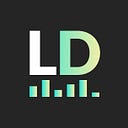So, You Want to Become a Data Analyst?
Start Here!
Are you looking to launch a career in data, but feel like your head is spinning with information overload?
You’ve Googled. You’ve followed influencers on LinkedIn. You’ve probably even read a few other Medium articles by now, and maybe you’re feeling a little lost because there’s just so. Much. Content!
The internet can be amazing when it comes to research opportunities, but it can also just make the analysis paralysis that much more intense. But don’t worry; this article is here to streamline the noise and simplify the process into three basic steps:
- Selecting your first data tool.
- Finding a learning method that works for you.
- Practice makes perfect.
I’m going to stay very high-level, and the goal is to help give direction to those who are just looking for the basics of where to start on their data career journey.
Sounds like you? Let’s dive in!
Step 1: Pick a Tool.
It’s so easy to get lost in step one!
People often assume that to be a data analyst you need to know EVERYTHING. Well, that’s not very helpful for a beginner, and if you take that approach you’re going to get overwhelmed VERY quickly.
I’m going to let you in on a secret that is true in any industry:
It’s better to specialize in ONE thing and use that as a building block to gain a general working knowledge of a few others rather than to rush the process and cherry-pick information for every tool available.
Don’t believe me? My friend Alice recently wrote about three different approaches to choosing your tool stack, and it’s worth a read!
Recommendation: Start with Excel!
If you’re uncertain about your career path and looking for the best overall time investment, skills in Excel are extremely transferable since it’s a tool used across just about every professional industry.
Excel is a great “one-stop shop” when it comes to data analysis. Need to manipulate and aggregate data? Done. Need a basic data visualization to support your analysis when you present it? You got it!
Since you likely already have a working knowledge of Excel, this is a GREAT place to start on your data career journey. You’ll be familiar with the interface and can take advantage of that familiarity as you develop new skills.
Step 2: Choose a Learning Method.
There are many routes you can take to build your data analysis skills! Each has pros and cons, so be sure to do your research and choose the best fit for your own needs.
College and university classes are absolutely an option if that’s something you’re interested in pursuing! If you’re already enrolled in a college or university and trying to choose a major, this could be a good option for you.
If you, like many others, find that traditional higher education is cost-prohibitive or not thorough enough, you have some other options:
Immersive programs and bootcamps can provide a structured learning environment where you dive deep into data literacy and get the benefit of instructor and peer support.
Professional learning platforms are a great resource for self-paced learning on a budget. A platform like Maven Analytics can go beyond providing a course list; their guided learning approach and instructor Q&A provide support as you progress in your studies, and they provide ample opportunities to practice and display your new skills!
Independent study can be an option for some people, but it isn’t the easiest or most supported path to walk. It’s important to remember that, while there are tons of great free resources out there, you do get what you pay for — when you Frankenstein together a learning path from miscellaneous resources, it’s harder to know what knowledge gaps you’re going to run into later…especially if you’re brand new to the tool or area of study.
Step 3: Keep Practicing!
We’ve all heard the phrase: “Use it or lose it!”
Once you’ve taken the time to learn a skill, it’s important to reinforce and refresh that knowledge with lots of practice!
There are plenty of opportunities to flex those data muscles:
- Try a guided project if you’re looking for something with a bit of extra support as you work through a real-world analysis.
- Utilize free data sets to get in realistic independent analysis practice and build your data project portfolio.
- Use practice sites (especially for SQL and Python!) like DataLemur, LeetCode, or HackerRank to hone your technical skills and prep for the technical interview.
- Join data challenges to foster your community and interact with your peers in the data world.
You can even volunteer with a local nonprofit or create your own data set from something you experience in your daily life; data is everywhere, just waiting to be collected and analyzed!
Final Thoughts
Starting down a new career path can be intimidating, but it doesn’t have to be!
Remember: everyone starts at zero. Even the data professionals that you admire most were once in your shoes!
Break the process down, and set goals for yourself. Rather than comparing yourself to others, focus on your own improvements over time. When you get discouraged, think back to right now, when you’re just starting your journey. And then, keep going!
Soon enough, you’ll be the inspiration for the next generation of data analysts.
If you liked this, we’d love for you to subscribe to our publication, and please drop us a comment letting us know what you’d like to see next!
You can also submit your own writing for us to promote, so don’t be shy if you would like to become a contributor.
Happy learning!
